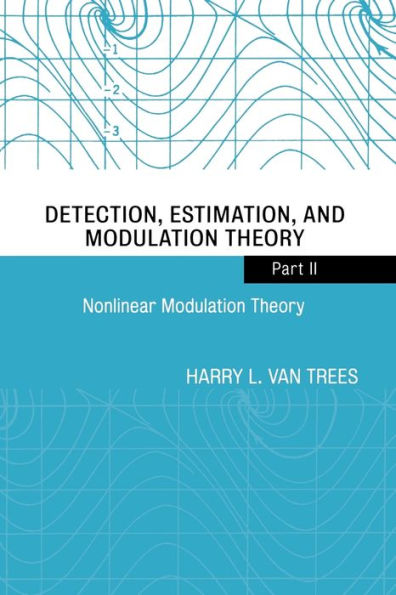Originally published in 1971, Harry Van Trees' Detection, Estimation, and Modulation Theory, Part II is one of the classic references in the area of nonlinear modulation theory and analog communication. Highly readable and well organized, it is as valuable today for professionals, researchers, and students interested in the estimation of continuous waveforms as it was over thirty years ago.
Part II focuses on the problem of finding the optimum estimate of a waveform which is embedded in a signal in a nonlinear manner. The following topics are covered in detail:
- Bayesian Cramér-Rao bound on the mean-square estimation error
- Optimum demodulators for frequency-modulation systems
- Phase estimation: the synchronization problem
- Fokker-Planck techniques for nonlinear analysis in the presence of noise
- Optimum angle-modulation systems
- Rate distortion bounds for analog message transmission
- Analog communication over randomly time-varying channels
- State variable analysis procedures
For students in signal processing or professionals looking for a reliable refresher on waveform estimation, Detection, Estimation, and Modulation Theory, Part II provides authoritative, practical coverage by one of the most renowned figures in the field. Although most current systems are implemented digitally, the bounds on performance developed in Part II are still applicable.
Originally published in 1971, Harry Van Trees' Detection, Estimation, and Modulation Theory, Part II is one of the classic references in the area of nonlinear modulation theory and analog communication. Highly readable and well organized, it is as valuable today for professionals, researchers, and students interested in the estimation of continuous waveforms as it was over thirty years ago.
Part II focuses on the problem of finding the optimum estimate of a waveform which is embedded in a signal in a nonlinear manner. The following topics are covered in detail:
- Bayesian Cramér-Rao bound on the mean-square estimation error
- Optimum demodulators for frequency-modulation systems
- Phase estimation: the synchronization problem
- Fokker-Planck techniques for nonlinear analysis in the presence of noise
- Optimum angle-modulation systems
- Rate distortion bounds for analog message transmission
- Analog communication over randomly time-varying channels
- State variable analysis procedures
For students in signal processing or professionals looking for a reliable refresher on waveform estimation, Detection, Estimation, and Modulation Theory, Part II provides authoritative, practical coverage by one of the most renowned figures in the field. Although most current systems are implemented digitally, the bounds on performance developed in Part II are still applicable.

Detection, Estimation, and Modulation Theory, Part II: Nonlinear Modulation Theory
368
Detection, Estimation, and Modulation Theory, Part II: Nonlinear Modulation Theory
368Paperback(Part II)

Product Details
| ISBN-13: | 9780471446781 |
|---|---|
| Publisher: | Wiley |
| Publication date: | 01/10/2003 |
| Series: | Wiley Classics Library , #79 |
| Edition description: | Part II |
| Pages: | 368 |
| Product dimensions: | 6.10(w) x 9.31(h) x 0.78(d) |
